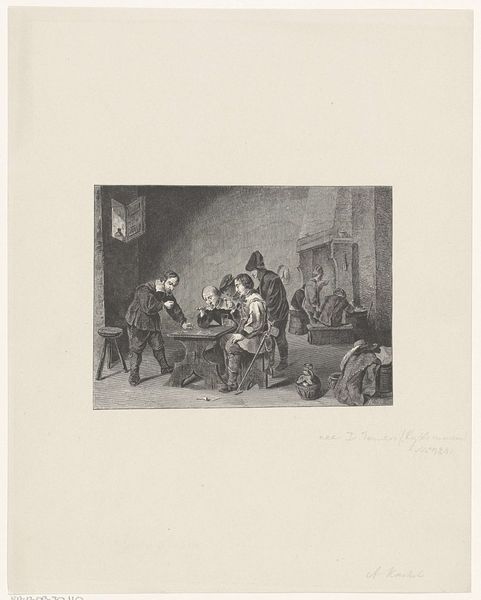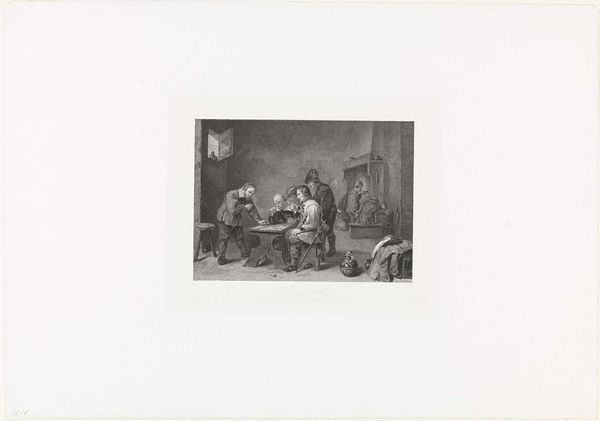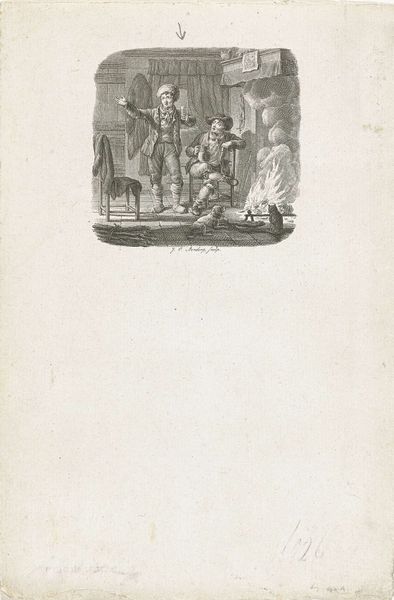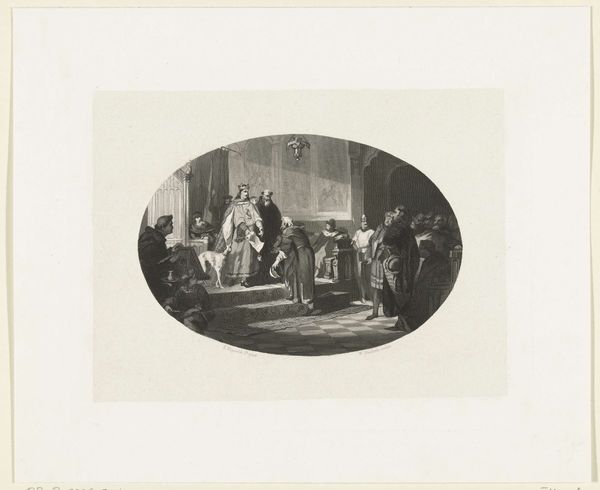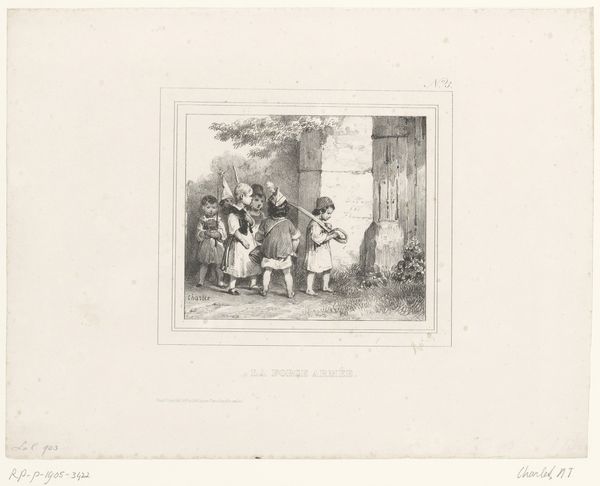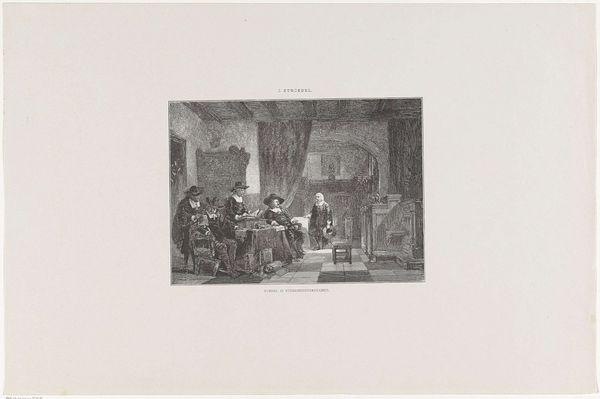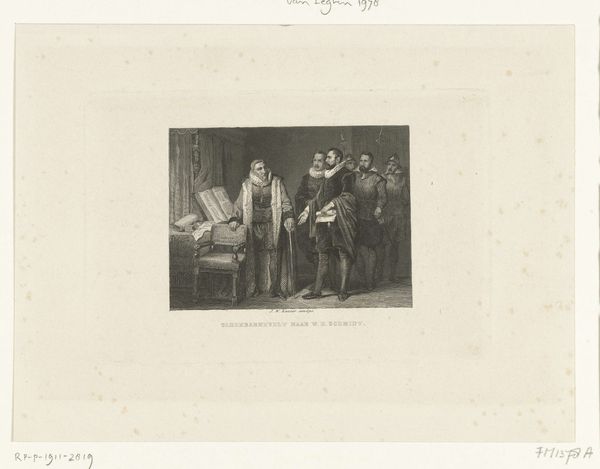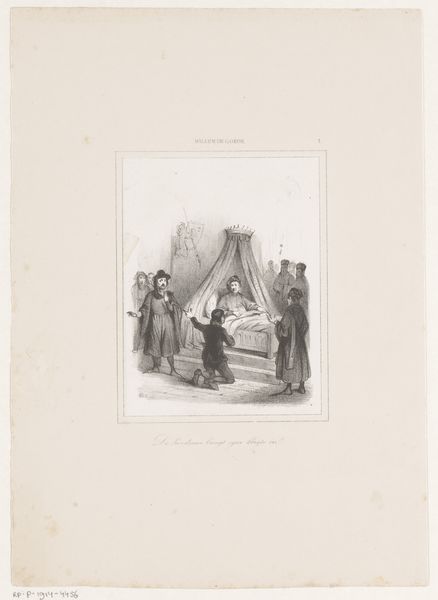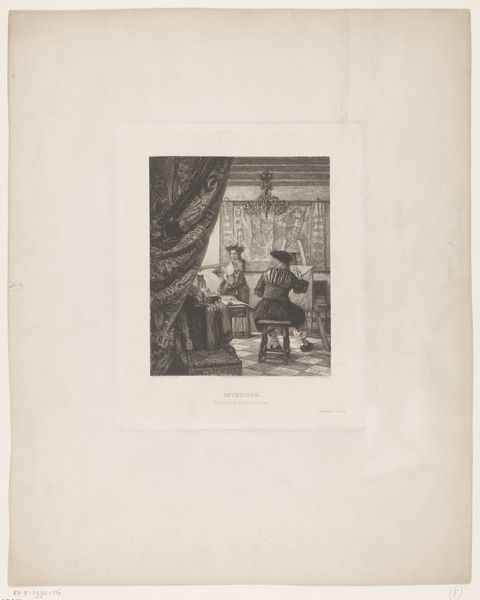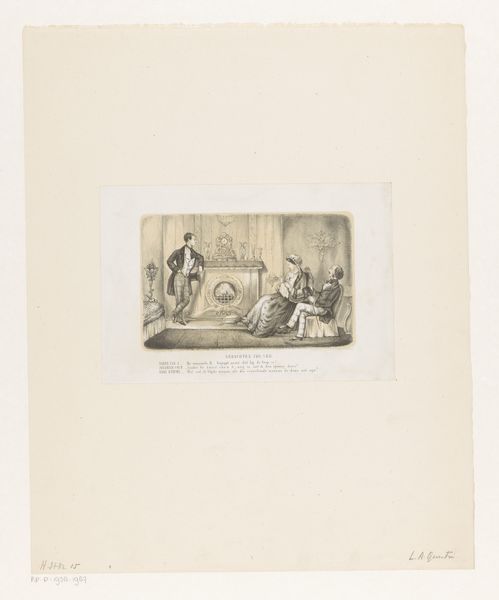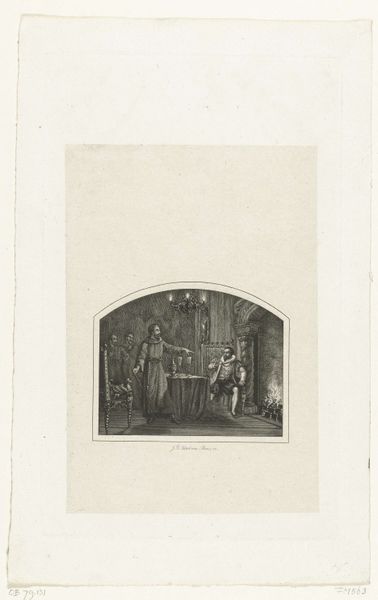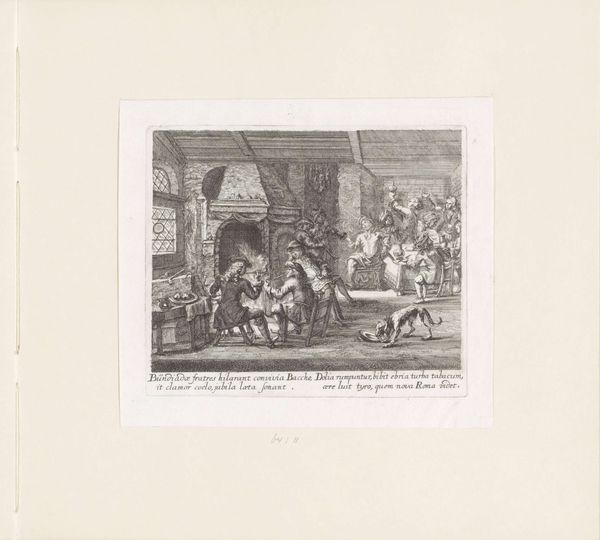
Groepje muzikanten speelt 's nachts voor het raam van een vrouw 1830 - 1845
0:00
0:00
engraving
#
narrative-art
#
romanticism
#
genre-painting
#
history-painting
#
engraving
Dimensions: height 250 mm, width 167 mm
Copyright: Rijks Museum: Open Domain
Curator: This engraving by Henricus Wilhelmus Couwenberg, made sometime between 1830 and 1845, is called "Groepje muzikanten speelt 's nachts voor het raam van een vrouw," or "A group of musicians plays at night beneath a woman's window." Editor: What a dramatically staged scene. The dark sky contrasts sharply with the lamp light on the musicians. I'm drawn to how all the figures' gaze are pointed at the seated woman, and how the architecture behind her and her cage evokes feelings of imprisonment and forced adoration. Curator: It certainly speaks to the themes prominent in Romanticism. I'm struck by the printing process itself; the texture, the lines pressed into the paper... these engravings were reproducible and relatively affordable, influencing and reflecting popular culture through mass media. Consider its role circulating images and social narratives at the time. Editor: I agree. Think of the power of imagery within that socio-political context. A picture like this probably circulated widely. Was it intended as social commentary, an illustration for a story, or something else? And where might something like this have been displayed or consumed? Curator: Knowing the artist and what workshop created it can inform how we contextualize its impact and perhaps decode the artistic intent and message embedded within it. And note the material choices made - how the tools impacted what type of marks could be produced. Editor: The Rijksmuseum contextualizes the work under both “Genre Painting” and “History Painting,” making its precise purpose ambiguous to contemporary audiences. It serves as a stark reminder of how historical and cultural shifts have a huge impact on our relationship with art objects and art-historical canons. Curator: Indeed. Considering the materials used to make such prints helps reveal the role of craft and skilled labor in art production—moving beyond merely thinking about fine art, it prompts us to consider these prints' broader social and economic significance. Editor: For me, viewing it through its contemporary consumption and cultural placement reframes the entire piece. It’s no longer just a collection of musicians. It’s a commentary on the ways stories are told and reinforced, with a distinct viewpoint presented. Curator: Thinking about how such items were fabricated gives us an opening to expand the art's value proposition—its meaning extends far beyond its immediate aesthetic.
Comments
No comments
Be the first to comment and join the conversation on the ultimate creative platform.
